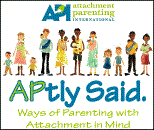After more than a year of sticking my "please do not disturb" post-it on my office door 2 or three times a day, I'm officially retiring my breastpump. I hadn't yet given much thought to when I'd stop pumping when, a week ago, Violet decided she was done drinking breastmilk any way other than straight from the source.
She was never much for the bottle to begin with. We waited to introduce one until she was six or eight weeks old, and Eric's initial overtures with it were not well received. She refused to take a bottle the entirety of my maternity leave, and we worried about whether she'd be more willing once she was in daycare. I went back to work when she was three months old, and getting her settled there went more smoothly than I ever could have hoped. But she still refused to take a bottle. She wasn't upset about it, she just wouldn't eat.
Fortunately, my employer is family-friendly, and supported me as I worked around Violet's preference for nothing but the breast. I'd nurse her there at the daycare immediately before going in to work, and return at lunch time to a happy (but hungry!) baby. After lunch she'd hold out until I returned at the end of the day when we'd sit down and nurse before heading home. She made up for any missed milk when we were together at night.
She stuck with this schedule for a couple of months, while her caregivers at daycare continued to gently encourage her to accept a bottle. Once she did, she never took more than 4 ounces at a time - and usually only an ounce or two. Just enough, it seemed, to stave off hunger for a little while longer.
Since Violet was never particularly attached to the bottle, I probably shouldn't have been so surprised when she decided she was done with it. She refused it from her sippy cup, too, waiting for the milk in the cup to be replaced with water before drinking. Wanting to be certain, I kept pumping all last week while we waited to see if she changed her mind. She didn't. So I packed up the pump, and worked all day through today without taking a break to pump. I could get used to this.
I don't know of any woman who loves to pump, and I certainly didn't, but I'm glad that I did it. I'm happy to have kept her exclusively breast-fed for more than six months despite being separated during the day, and to have continued to supply her with my milk to drink while we were apart as long as I have. She'll continue to get the benefits of breastmilk as we continue nursing whenever we're together; she's shown no sign of losing interest in that! And I'm looking forward to being done with dragging the pump to the office every day, (don't laugh) deleting my freezer stash spreadsheet, and getting back to the best parts of the nursing relationship: when she is snuggled into me and looks up and smiles. Or waves her foot in my face. Those are some of my favorite motherhood moments so far.




















